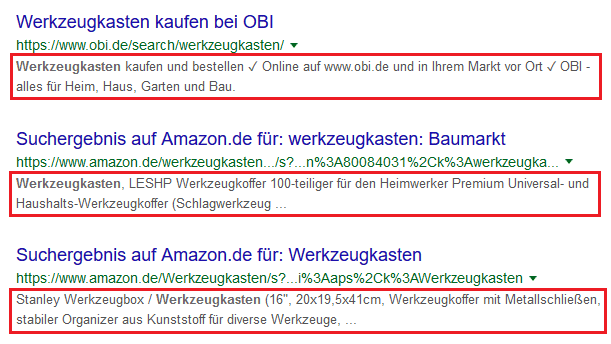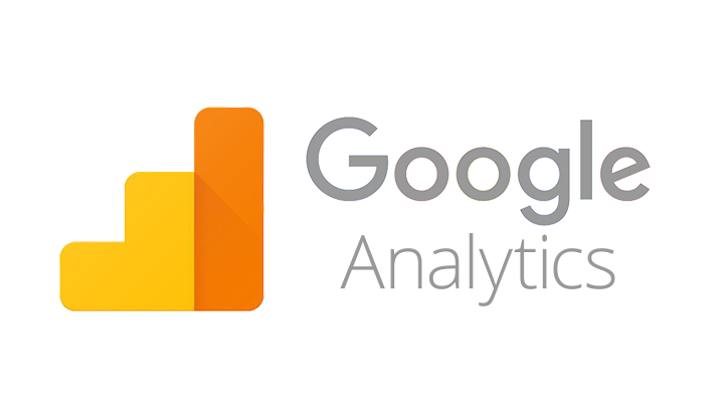
You work hard to market your business. You write your product descriptions, optimize your images and master most of the other elements of search engine optimization.
If you are like many others, one SEO aspect could still cause you problems – the meta description.
What is a meta description?
A meta description is a summary of up to 160 characters that describes the content of a website in search engines . Search engines like Google show these short descriptions in the search results if the meta description also contains the keywords you are looking for. Meta descriptions are intended to entice the searcher to click on a page and are part of effective SEO.
If you start a search query on Google, for example for the term “toolbox”, you will be taken to the search engine results page (SERP). This page is structured differently depending on the competition and may contain advertisements, images and videos. In this post we will focus on the traditional or “organic” results and ignore the rest:

The blue words above are called ” Title Tags “, they are the titles of the web pages. Under the page links you will then see descriptions of no more than 160 characters. These are the meta descriptions (see red boxes) .
How do you write a meta description?
Now that we know what a meta description is, you are probably wondering: How do I write a good meta description for my website?
First, focus on what would force a searcher to click on your title tag. There are two questions to be answered:
- What are you offering
- Why should I buy something from you or use your service?
With product pages, the first question has a simple answer: You are offering your product or service. The second question is solved by the simple fact that you are the one selling the product or service.
Meta descriptions for your homepage are a bit trickier. The best thing to do here is to keep re- emphasizing your brand as it’s the one thing your whole store is selling, and it’s why they should buy from you.
Let readers know what you are doing, tell them about your unique selling points and bring this information over several times, because the meta description is no place for small details. The conflict of finding an effective meta description for the homepage is widespread, so it is best to be patient and think about your brand.
If you’ve been around for a while, what are returning customers saying about your business? And if your company is new, what made you think your business would attract customers?
Talk to people about your company, formulate the meta description like an elevator pitch . You will likely want to go through a few drafts. It’s important to get this point right because this will be the first time many customers have encountered you and your brand.
When should I write a meta description?
Believe it or not, this article is not going to suggest that you should hurry up and make sure that all of your pages have meta descriptions.
Google also automatically creates the descriptions from the content of your page and this process offers more flexibility than a copywriter can manage. Optimizing a page for a keyword is difficult but worth it! Hence, you shouldn’t let Google do the work. If a lot of people land on your page using a variety of search terms, it can be difficult to optimize them properly right now. For companies with hundreds (if not thousands) of pages, it would be a daunting task to go back and write a meta description for each and every one of them.
Instead, it’s best to focus on the pages that are getting the most traffic from search engines . Take your top 10 or 20 pages and ask yourself for your title tags and meta descriptions: “Are we really selling the product here, or is there a way to improve the click rate?”
If you or a copywriter you’ve hired is putting together a new page of content, it is best to write a meta description directly in the details page of the admin area. Not only will this improve your SEO, but it will also lead you to summarize the idea of the page in a few words.
Essentially, we make the meta description the “key phrase” for the page, helping you determine if the page’s content consistently lives up to the meta description’s promise.
Meta descriptions are the best sellers
Ultimately, the meta description is a promise you make to the searcher. In a sea of competing websites it calls for you and tells us, “This is the page you are looking for.”
As you write your meta description, you should remember the three most important things that we talked about in this article.
1. Your meta description will not be longer than 160 characters.
It is okay to write a meta description that is too long and up to 300 characters long. Just be aware that in most cases only the first 160 characters will be displayed. In rare cases, Google displays a little more text, so follow the general display limit of 160 characters.
2. Focus on the customer
The meta descriptions for the pages of your products or services should focus on how they can improve the customer’s life. The meta description of the homepage should be sold in a way that your brand corresponds to the wishes and needs of the customer.
3. Repeat
You don’t have much time to make an impression. Once you find the message you want to convey, make sure that every sentence and choice of words gets the message across.
Hopefully this post has helped you understand the art of writing meta descriptions. Once you’ve applied the tips to your own websites, you can say goodbye to low click-through rates.






